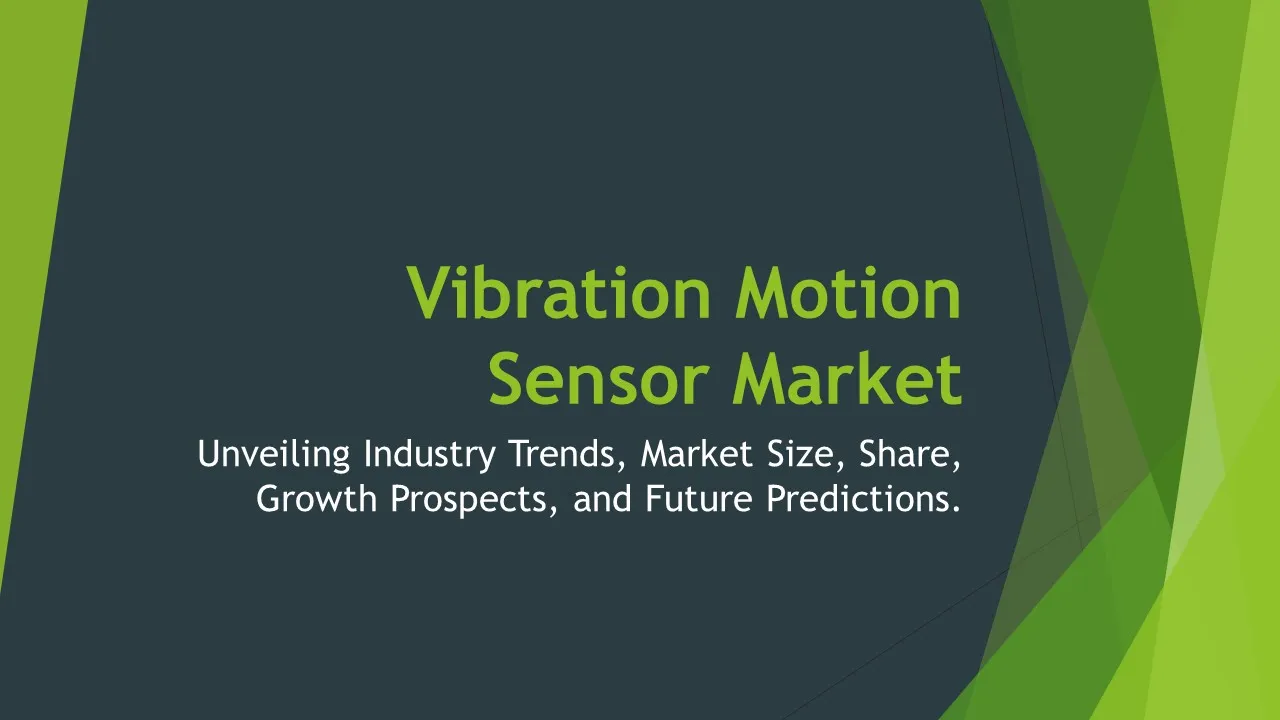3D Accelerometer and Acoustic Sensor
3D Accelerometer and Acoustic Sensor Market Segments - by Product Type (MEMS Accelerometer, Piezoelectric Accelerometer, Capacitive Accelerometer, Fiber Optic Accelerometer, and Piezoresistive Accelerometer), Application (Automotive, Consumer Electronics, Aerospace & Defense, Healthcare, and Industrial), Distribution Channel (Online Stores, Electronics Stores, Direct Sales, OEMs, and Others), Sensor Type (Accelerometer, Microphone, Acoustic Wave Sensor, Hydrophone, and Seismic Sensor), and Region (North America, Europe, Asia Pacific, Latin America, and Middle East & Africa) - Global Industry Analysis, Growth, Share, Size, Trends, and Forecast 2025-2035
- Report Preview
- Table Of Content
- Segments
- Methodology
3D Accelerometer and Acoustic Sensor Market Outlook
The global 3D accelerometer and acoustic sensor market was valued at approximately USD 3.5 billion in 2023 and is projected to reach USD 5.8 billion by 2035, growing at a CAGR of around 5.3% during the forecast period. The increasing demand for advanced sensing technologies in various sectors such as automotive, consumer electronics, and healthcare is a significant growth factor driving this market. Additionally, the rising integration of IoT devices coupled with the need for real-time data processing and monitoring further propels the market's expansion. The growth of autonomous vehicles and smart devices is expected to continue to fuel the market as well. Furthermore, advancements in technology leading to the miniaturization of sensors will likely enhance their adoption across numerous applications, thereby augmenting market growth.
Growth Factor of the Market
The growth of the 3D accelerometer and acoustic sensor market can be attributed to several key factors. Firstly, the rapid growth of the Internet of Things (IoT) is playing a pivotal role by significantly increasing the demand for connected devices that require sophisticated sensing capabilities. Additionally, there is a notable trend towards automation across various industries, particularly in automotive and manufacturing sectors, where sensors are essential for monitoring and controlling processes. Moreover, the rising consumer electronics market is driving demand for innovative products that integrate advanced sensing technologies to enhance user experience. The increasing focus on safety and security in automotive applications, including features such as collision detection and automated emergency braking systems, further elevates the need for high-precision accelerometers. Furthermore, the ongoing advancements in sensor technologies, enabling better performance and cost-efficiency, are likely to provide lucrative opportunities for market participants.
Key Highlights of the Market
- Growing adoption of IoT devices boosting the demand for advanced sensor technologies.
- Significant advancements in MEMS technology enhancing sensor performance and miniaturization.
- Increasing investments in R&D aimed at developing next-generation sensing solutions.
- Rising demand for acoustic sensors in healthcare applications, especially in diagnostics.
- Expansion of the automotive industry incorporating advanced safety features influenced by accelerometer technology.
By Product Type
MEMS Accelerometer:
MEMS (Micro-Electro-Mechanical Systems) accelerometers are among the most commonly used sensors in the 3D accelerometer market due to their small size, low power consumption, and high accuracy. These sensors utilize microfabrication techniques to create tiny mechanical elements that can measure acceleration forces. Their widespread adoption is evident in consumer electronics, automotive applications, and industrial machinery. The capability of MEMS accelerometers to provide precise motion tracking and positioning has made them integral components for smartphones, wearable devices, and various IoT applications. The ongoing advancements in MEMS technology continue to enhance their performance, making them ideal for applications demanding high sensitivity and robustness. As a result, the MEMS accelerometer segment is expected to witness substantial growth in the coming years.
Piezoelectric Accelerometer:
Piezoelectric accelerometers leverage the piezoelectric effect to measure changes in acceleration, making them suitable for dynamic applications. These sensors are known for their wide frequency range and high sensitivity, which is crucial for applications in aerospace, automotive, and industrial sectors. Piezoelectric accelerometers are extensively used in vibration testing, structural health monitoring, and seismic applications. Their robustness and ability to function in extreme environments make them a preferred choice for many critical applications. As industries increasingly prioritize reliability and long-term performance, the demand for piezoelectric accelerometers is anticipated to rise, driving growth within this segment of the market.
Capacitive Accelerometer:
Capacitive accelerometers operate based on changes in capacitance due to acceleration forces acting on their sensing elements. These sensors are gaining traction in various applications due to their high sensitivity and low noise characteristics. They are widely used in automotive systems for crash detection, stability control, and other safety features. Additionally, capacitive accelerometers are becoming increasingly popular in consumer electronics for motion detection, gaming, and user interface applications. As manufacturers focus on creating more advanced and user-friendly products, the adoption of capacitive accelerometers is expected to grow, contributing positively to the overall market.
Fiber Optic Accelerometer:
Fiber optic accelerometers utilize light transmission through optical fibers to measure acceleration changes. These sensors offer advantages such as high sensitivity, immunity to electromagnetic interference, and the ability to operate in harsh environments. Their unique characteristics make them suitable for applications in aerospace, defense, and industrial sectors, where precision and reliability are paramount. Additionally, as industries increasingly invest in technologies that ensure safety and performance, fiber optic accelerometers are poised to gain significant market traction. The segment's growth will be further supported by advancements in fiber optic technology, which continue to improve sensor capabilities.
Piezoresistive Accelerometer:
Piezoresistive accelerometers measure acceleration by observing changes in electrical resistance caused by applied forces. These sensors are particularly valued for their accuracy and reliability, making them essential in automotive applications, aerospace, and industrial machinery. The ability to deliver precise measurements and operate effectively in various environmental conditions adds to their appeal. As manufacturers seek to enhance the performance and safety of vehicles and machinery, the demand for piezoresistive accelerometers is expected to rise. Consequently, this product type is anticipated to experience notable growth, driven by the ongoing advancements in sensing technologies.
By Application
Automotive:
The automotive sector is one of the largest consumers of 3D accelerometers and acoustic sensors, driven by the increasing implementation of advanced driver-assistance systems (ADAS) and the rising demand for safety features in vehicles. These sensors play a crucial role in providing real-time data to systems responsible for features such as electronic stability control, collision detection, and automated emergency braking. As the automotive industry continues to evolve with the rise of electric and autonomous vehicles, the demand for high-performance sensors is expected to grow significantly. The incorporation of accelerometers in vehicle systems enhances safety, reliability, and overall driving experience, making this application segment a major contributor to the market's growth.
Consumer Electronics:
In the consumer electronics sector, 3D accelerometers and acoustic sensors are widely utilized in various devices, including smartphones, tablets, and wearables. These sensors enable essential features such as motion tracking, orientation detection, and gesture recognition, which significantly enhance user interaction and functionality. The increasing consumer demand for smart devices that incorporate advanced technologies is driving the growth of this application segment. Additionally, as manufacturers strive to create more innovative and user-friendly products, the adoption of advanced sensing technologies is expected to rise, further boosting the demand for accelerometers and acoustic sensors in consumer electronics.
Aerospace & Defense:
The aerospace and defense sectors are rapidly adopting 3D accelerometers and acoustic sensors for applications such as navigation, structural health monitoring, and mission-critical systems. These sensors provide essential data that aids in ensuring safety and performance in aerospace applications, including aircraft and spacecraft systems. The unique requirements of these industries, including operation in extreme conditions and the necessity for high reliability, make advanced accelerometers indispensable. As the demand for advanced aerospace technologies continues to grow, particularly in defense applications, the market for 3D accelerometers and acoustic sensors is expected to experience significant growth in this segment.
Healthcare:
The healthcare industry is increasingly leveraging 3D accelerometers and acoustic sensors for applications in medical devices, patient monitoring, and diagnostics. These sensors enable healthcare professionals to collect vital data related to patient movements, activity levels, and physiological parameters. The integration of advanced sensing technologies enhances the accuracy of diagnostic devices and improves patient care. As the focus on telehealth and remote patient monitoring continues to gain traction, the demand for sensors that enable real-time monitoring is expected to rise. Consequently, the healthcare application segment is poised for notable growth, driven by the increasing adoption of innovative medical technologies.
Industrial:
In industrial environments, 3D accelerometers and acoustic sensors are utilized for machine monitoring, predictive maintenance, and process optimization. These sensors help in detecting anomalies in machinery, allowing for timely interventions and reducing downtime. The push towards automation and smart manufacturing has amplified the demand for advanced sensing technologies in this sector. As industries seek to improve operational efficiency and reduce maintenance costs, the adoption of accelerometers and acoustic sensors is expected to rise significantly. This trend positions the industrial application segment as a key growth area within the market.
By Distribution Channel
Online Stores:
Online stores have emerged as a significant distribution channel for 3D accelerometers and acoustic sensors, driven by the convenience of digital shopping and the ability to compare products easily. Customers benefit from a wide selection of sensors available at competitive prices, allowing them to make informed purchasing decisions. The growing trend of e-commerce, especially in light of recent global events that have accelerated online shopping, has further solidified this channel's position in the market. With online platforms providing access to detailed product specifications, user reviews, and customer support, this distribution channel is expected to continue gaining traction in the coming years.
Electronics Stores:
Electronics stores remain a traditional yet vital distribution channel for 3D accelerometers and acoustic sensors. These brick-and-mortar stores provide customers with the opportunity to physically examine products, seek expert advice, and make immediate purchases. The personalized service offered in electronics stores allows consumers to better understand the specifications and applications of various sensors. As the demand for high-tech components continues to rise, electronics stores are likely to maintain their importance in the distribution landscape. Additionally, manufacturers often collaborate with these retailers to showcase their latest products, further driving sales through this channel.
Direct Sales:
Direct sales involve manufacturers selling their products directly to consumers or businesses, eliminating intermediaries. This channel is particularly prevalent in the B2B sector, where companies seek specialized sensors for specific applications. Direct sales enable manufacturers to establish strong relationships with their clients, provide tailored solutions, and offer comprehensive customer support. As industries increasingly prioritize customized solutions and direct engagement with suppliers, the direct sales channel is expected to grow in importance, especially for high-end and specialized sensor applications.
OEMs:
Original Equipment Manufacturers (OEMs) play a crucial role in the distribution of 3D accelerometers and acoustic sensors, as they integrate these components into their products, ranging from automotive systems to consumer electronics. Working closely with sensor manufacturers allows OEMs to ensure that the sensors meet specific performance, reliability, and regulatory standards. The collaboration between OEMs and sensor manufacturers is vital for creating innovative products that cater to evolving consumer demands. As the trend towards smarter and more connected devices continues, the OEM distribution channel is set to experience robust growth, driven by the increasing integration of advanced sensors in various applications.
Others:
Other distribution channels for 3D accelerometers and acoustic sensors may include specialized distributors, value-added resellers, and wholesalers that provide a range of products to various sectors. These channels serve niche markets and may offer unique solutions tailored to specific industry requirements. The diversity of distribution channels allows for better market penetration and enhanced accessibility of advanced sensing technologies across different applications. As the industry continues to evolve, alternative distribution channels are likely to play a significant role in meeting the growing demand for accelerometers and acoustic sensors.
By Sensor Type
Accelerometer:
Accelerometers are the primary sensors in this market, measuring acceleration forces in one, two, or three dimensions. They are integral in various applications, including automotive safety systems, consumer electronics, and industrial machinery. Their ability to provide precise motion and position information enables advancements in technology and enhanced user experiences. The ongoing demand for high-performance accelerometers is driven by the need for better safety features and improved functionality in modern devices. As technological innovation continues to shape various industries, the market for accelerometers is projected to grow significantly.
Microphone:
Microphones integrated with acoustic sensors are becoming increasingly prevalent in applications such as voice recognition, environmental monitoring, and industrial automation. These sensors capture sound waves and convert them into electrical signals, providing valuable data for various processes. The growing trend of smart devices with voice-activated features is fueling the demand for high-quality microphones. As industries continue to embrace automation and advanced communication technologies, the microphone segment is expected to experience considerable growth driven by the increasing need for accurate audio capture in various applications.
Acoustic Wave Sensor:
Acoustic wave sensors measure changes in surface acoustic waves, allowing them to detect various physical and chemical properties. These sensors are widely used in environmental monitoring, healthcare diagnostics, and industrial applications. Their ability to provide high sensitivity and selectivity makes them valuable for detecting gases, liquids, and other substances. The increasing focus on environmental protection and health monitoring is driving the demand for acoustic wave sensors, positioning this segment for significant growth in the coming years.
Hydrophone:
Hydrophones are specialized sensors designed to detect sound in water, making them crucial for underwater applications such as marine research, sonar systems, and underwater communications. The growing interest in marine conservation and underwater exploration is driving the demand for hydrophones. Their ability to provide accurate acoustic data in challenging underwater environments enhances our understanding of marine ecosystems. As research and development in oceanography and marine biology expand, the hydrophone segment is expected to experience rapid growth.
Seismic Sensor:
Seismic sensors are designed to detect and measure ground motion resulting from seismic activities, providing critical data for earthquake monitoring and geophysical research. The increasing frequency of seismic events and the need for disaster preparedness are driving the demand for seismic sensors globally. Additionally, these sensors play a vital role in mining and oil exploration, where understanding subsurface conditions is essential. The growing emphasis on infrastructure safety and disaster risk reduction is expected to propel the seismic sensor segment's growth over the forecast period.
By Region
The North American region currently leads the global 3D accelerometer and acoustic sensor market, accounting for approximately 35% of the total market share in 2023. The growing presence of key players in the region, coupled with significant investments in technology and innovation, has contributed to this dominance. Furthermore, the demand for advanced automotive technologies and smart consumer electronics in the U.S. and Canada continues to drive market growth. The projected CAGR for this region is around 5.7%, supported by increasing adoption of IoT devices and a strong focus on safety features in automotive applications. The ongoing advancements in sensor technologies in North America are expected to enhance the region's market position over the next decade.
Europe holds the second-largest share in the 3D accelerometer and acoustic sensor market, accounting for approximately 28% of the total market in 2023. The region is witnessing significant growth due to the rising demand for advanced technologies in automotive, aerospace, and industrial applications. The increasing emphasis on energy efficiency and safety in automotive systems, along with substantial investments in R&D, are key drivers for this market segment. The CAGR for Europe is projected to be around 4.9% during the forecast period. Countries such as Germany, the UK, and France are expected to lead the growth in this region, supported by the presence of well-established automotive and electronics industries. The demand for advanced sensing solutions in healthcare and industrial applications will also contribute to this positive market outlook.
Opportunities
With the global shift towards smart manufacturing and automation, the 3D accelerometer and acoustic sensor market presents numerous opportunities for growth. As industries increasingly adopt IoT solutions, the demand for sensors that can provide real-time data for monitoring and analytics is on the rise. This trend is particularly prominent in sectors such as manufacturing, automotive, and healthcare, where advanced sensing technologies are essential for improving operational efficiency and safety. Additionally, the growing interest in wearable technology and smart devices offers a lucrative avenue for manufacturers to innovate and develop new sensor applications. Companies that invest in research and development to create cutting-edge sensors with enhanced capabilities will likely capitalize on these market opportunities.
Another promising opportunity lies in the development of advanced sensing solutions for emerging markets. As countries in Asia-Pacific, Latin America, and Africa continue to industrialize and adopt modern technologies, the demand for 3D accelerometers and acoustic sensors is expected to grow significantly. These regions are experiencing rapid urbanization and technological advancements, creating a favorable environment for sensor manufacturers. Furthermore, increased investment in infrastructure development and transportation systems in these regions offers substantial growth potential for the market. By strategically positioning themselves in these emerging markets, companies can tap into new customer bases and drive their growth trajectories.
Threats
Despite the promising growth prospects, the 3D accelerometer and acoustic sensor market faces several threats that could impact its development. One of the most significant concerns is the rapid pace of technological change, which can lead to obsolescence if manufacturers fail to keep up with advancements. Companies must continuously innovate and adapt to remain competitive in a market that is constantly evolving. Additionally, the increasing complexity of sensor integration into smart systems poses challenges for manufacturers, as they must ensure compatibility and performance with diverse technologies. Furthermore, the market is susceptible to economic fluctuations and trade tensions, which can disrupt supply chains and affect manufacturing costs.
Another threat to consider is the potential for regulatory challenges. As the market for 3D accelerometers and acoustic sensors expands, so too does the scrutiny from regulatory bodies regarding safety, performance, and environmental impact. Compliance with various regulations across different regions can be costly and time-consuming for manufacturers. Additionally, the emergence of alternative sensing technologies may present competitive threats, as new innovations could disrupt existing market dynamics. Companies must stay vigilant and proactively address these threats to safeguard their position in the market.
Competitor Outlook
- Analog Devices, Inc.
- STMicroelectronics N.V.
- Texas Instruments Incorporated
- Honeywell International Inc.
- Bosch Sensortec GmbH
- Murata Manufacturing Co., Ltd.
- InvenSense, Inc. (TDK Corporation)
- TE Connectivity Ltd.
- Kionix, Inc.
- National Instruments Corporation
- Vishay Intertechnology, Inc.
- Seismic Sensors Co.
- Siemens AG
- Emcore Corporation
- Microchip Technology Inc.
The competitive landscape of the 3D accelerometer and acoustic sensor market is characterized by the presence of several established players and emerging companies dedicated to innovation and technological advancement. Major companies such as Analog Devices, STMicroelectronics, and Texas Instruments have been at the forefront of developing cutting-edge sensor technologies, leveraging their expertise in microfabrication and electronics. These companies invest heavily in research and development to enhance their product offerings, focusing on miniaturization, performance, and cost-effectiveness. Additionally, they engage in strategic partnerships and collaborations to expand their market reach and explore new application areas, further intensifying the competition in the industry.
Emerging players and startups also contribute to the competitive dynamics of the market, often focusing on niche applications or specialized sensor technologies. These companies bring fresh perspectives and innovative solutions that challenge established norms, pushing the envelope in terms of performance and functionality. For example, firms like InvenSense and Kionix have made significant strides in the MEMS accelerometer segment, while companies like Honeywell and Bosch are leading the way in integrating sensors into smart technologies. This diverse competitive landscape fosters innovation and ensures that the market continues to evolve in response to changing consumer demands and technological advancements.
In summary, the 3D accelerometer and acoustic sensor market is shaped by a mix of established players with extensive resources and innovative startups that drive technological advancements. Companies that prioritize research and development, engage in strategic collaborations, and focus on delivering high-quality products will likely emerge as leaders in the market. As the demand for advanced sensing technologies continues to grow across various industries, the competitive landscape will remain dynamic, with opportunities for collaboration and growth for both established and emerging players alike.
1 Appendix
- 1.1 List of Tables
- 1.2 List of Figures
2 Introduction
- 2.1 Market Definition
- 2.2 Scope of the Report
- 2.3 Study Assumptions
- 2.4 Base Currency & Forecast Periods
3 Market Dynamics
- 3.1 Market Growth Factors
- 3.2 Economic & Global Events
- 3.3 Innovation Trends
- 3.4 Supply Chain Analysis
4 Consumer Behavior
- 4.1 Market Trends
- 4.2 Pricing Analysis
- 4.3 Buyer Insights
5 Key Player Profiles
- 5.1 Siemens AG
- 5.1.1 Business Overview
- 5.1.2 Products & Services
- 5.1.3 Financials
- 5.1.4 Recent Developments
- 5.1.5 SWOT Analysis
- 5.2 Kionix, Inc.
- 5.2.1 Business Overview
- 5.2.2 Products & Services
- 5.2.3 Financials
- 5.2.4 Recent Developments
- 5.2.5 SWOT Analysis
- 5.3 Emcore Corporation
- 5.3.1 Business Overview
- 5.3.2 Products & Services
- 5.3.3 Financials
- 5.3.4 Recent Developments
- 5.3.5 SWOT Analysis
- 5.4 Seismic Sensors Co.
- 5.4.1 Business Overview
- 5.4.2 Products & Services
- 5.4.3 Financials
- 5.4.4 Recent Developments
- 5.4.5 SWOT Analysis
- 5.5 Analog Devices, Inc.
- 5.5.1 Business Overview
- 5.5.2 Products & Services
- 5.5.3 Financials
- 5.5.4 Recent Developments
- 5.5.5 SWOT Analysis
- 5.6 Bosch Sensortec GmbH
- 5.6.1 Business Overview
- 5.6.2 Products & Services
- 5.6.3 Financials
- 5.6.4 Recent Developments
- 5.6.5 SWOT Analysis
- 5.7 TE Connectivity Ltd.
- 5.7.1 Business Overview
- 5.7.2 Products & Services
- 5.7.3 Financials
- 5.7.4 Recent Developments
- 5.7.5 SWOT Analysis
- 5.8 STMicroelectronics N.V.
- 5.8.1 Business Overview
- 5.8.2 Products & Services
- 5.8.3 Financials
- 5.8.4 Recent Developments
- 5.8.5 SWOT Analysis
- 5.9 Microchip Technology Inc.
- 5.9.1 Business Overview
- 5.9.2 Products & Services
- 5.9.3 Financials
- 5.9.4 Recent Developments
- 5.9.5 SWOT Analysis
- 5.10 Honeywell International Inc.
- 5.10.1 Business Overview
- 5.10.2 Products & Services
- 5.10.3 Financials
- 5.10.4 Recent Developments
- 5.10.5 SWOT Analysis
- 5.11 Vishay Intertechnology, Inc.
- 5.11.1 Business Overview
- 5.11.2 Products & Services
- 5.11.3 Financials
- 5.11.4 Recent Developments
- 5.11.5 SWOT Analysis
- 5.12 Murata Manufacturing Co., Ltd.
- 5.12.1 Business Overview
- 5.12.2 Products & Services
- 5.12.3 Financials
- 5.12.4 Recent Developments
- 5.12.5 SWOT Analysis
- 5.13 Texas Instruments Incorporated
- 5.13.1 Business Overview
- 5.13.2 Products & Services
- 5.13.3 Financials
- 5.13.4 Recent Developments
- 5.13.5 SWOT Analysis
- 5.14 National Instruments Corporation
- 5.14.1 Business Overview
- 5.14.2 Products & Services
- 5.14.3 Financials
- 5.14.4 Recent Developments
- 5.14.5 SWOT Analysis
- 5.15 InvenSense, Inc. (TDK Corporation)
- 5.15.1 Business Overview
- 5.15.2 Products & Services
- 5.15.3 Financials
- 5.15.4 Recent Developments
- 5.15.5 SWOT Analysis
- 5.1 Siemens AG
6 Market Segmentation
- 6.1 3D Accelerometer and Acoustic Sensor Market, By Application
- 6.1.1 Automotive
- 6.1.2 Consumer Electronics
- 6.1.3 Aerospace & Defense
- 6.1.4 Healthcare
- 6.1.5 Industrial
- 6.2 3D Accelerometer and Acoustic Sensor Market, By Sensor Type
- 6.2.1 Accelerometer
- 6.2.2 Microphone
- 6.2.3 Acoustic Wave Sensor
- 6.2.4 Hydrophone
- 6.2.5 Seismic Sensor
- 6.3 3D Accelerometer and Acoustic Sensor Market, By Distribution Channel
- 6.3.1 Online Stores
- 6.3.2 Electronics Stores
- 6.3.3 Direct Sales
- 6.3.4 OEMs
- 6.3.5 Others
- 6.1 3D Accelerometer and Acoustic Sensor Market, By Application
7 Competitive Analysis
- 7.1 Key Player Comparison
- 7.2 Market Share Analysis
- 7.3 Investment Trends
- 7.4 SWOT Analysis
8 Research Methodology
- 8.1 Analysis Design
- 8.2 Research Phases
- 8.3 Study Timeline
9 Future Market Outlook
- 9.1 Growth Forecast
- 9.2 Market Evolution
10 Geographical Overview
- 10.1 Europe - Market Analysis
- 10.1.1 By Country
- 10.1.1.1 UK
- 10.1.1.2 France
- 10.1.1.3 Germany
- 10.1.1.4 Spain
- 10.1.1.5 Italy
- 10.1.1 By Country
- 10.2 Asia Pacific - Market Analysis
- 10.2.1 By Country
- 10.2.1.1 India
- 10.2.1.2 China
- 10.2.1.3 Japan
- 10.2.1.4 South Korea
- 10.2.1 By Country
- 10.3 Latin America - Market Analysis
- 10.3.1 By Country
- 10.3.1.1 Brazil
- 10.3.1.2 Argentina
- 10.3.1.3 Mexico
- 10.3.1 By Country
- 10.4 North America - Market Analysis
- 10.4.1 By Country
- 10.4.1.1 USA
- 10.4.1.2 Canada
- 10.4.1 By Country
- 10.5 Middle East & Africa - Market Analysis
- 10.5.1 By Country
- 10.5.1.1 Middle East
- 10.5.1.2 Africa
- 10.5.1 By Country
- 10.6 3D Accelerometer and Acoustic Sensor Market by Region
- 10.1 Europe - Market Analysis
11 Global Economic Factors
- 11.1 Inflation Impact
- 11.2 Trade Policies
12 Technology & Innovation
- 12.1 Emerging Technologies
- 12.2 AI & Digital Trends
- 12.3 Patent Research
13 Investment & Market Growth
- 13.1 Funding Trends
- 13.2 Future Market Projections
14 Market Overview & Key Insights
- 14.1 Executive Summary
- 14.2 Key Trends
- 14.3 Market Challenges
- 14.4 Regulatory Landscape
Segments Analyzed in the Report
The global 3D Accelerometer and Acoustic Sensor market is categorized based on
By Application
- Automotive
- Consumer Electronics
- Aerospace & Defense
- Healthcare
- Industrial
By Distribution Channel
- Online Stores
- Electronics Stores
- Direct Sales
- OEMs
- Others
By Sensor Type
- Accelerometer
- Microphone
- Acoustic Wave Sensor
- Hydrophone
- Seismic Sensor
By Region
- North America
- Europe
- Asia Pacific
- Latin America
- Middle East & Africa
Key Players
- Analog Devices, Inc.
- STMicroelectronics N.V.
- Texas Instruments Incorporated
- Honeywell International Inc.
- Bosch Sensortec GmbH
- Murata Manufacturing Co., Ltd.
- InvenSense, Inc. (TDK Corporation)
- TE Connectivity Ltd.
- Kionix, Inc.
- National Instruments Corporation
- Vishay Intertechnology, Inc.
- Seismic Sensors Co.
- Siemens AG
- Emcore Corporation
- Microchip Technology Inc.
- Publish Date : Jan 21 ,2025
- Report ID : EL-32635
- No. Of Pages : 100
- Format : |
- Ratings : 4.5 (110 Reviews)








